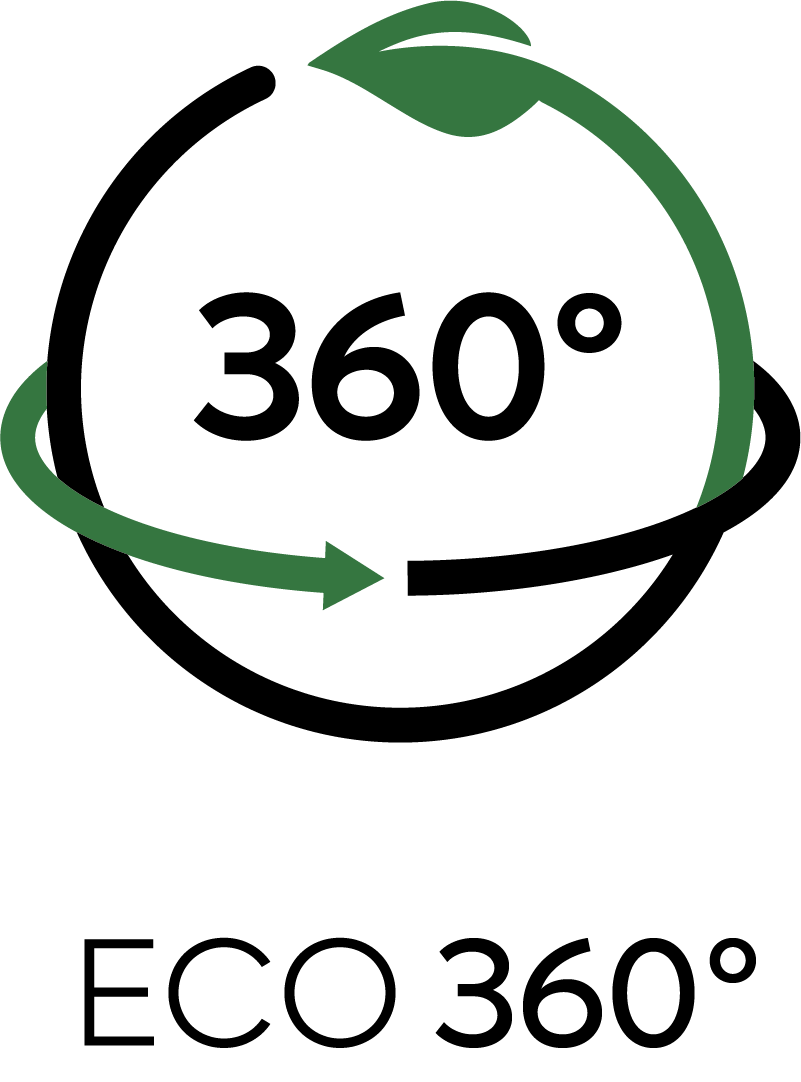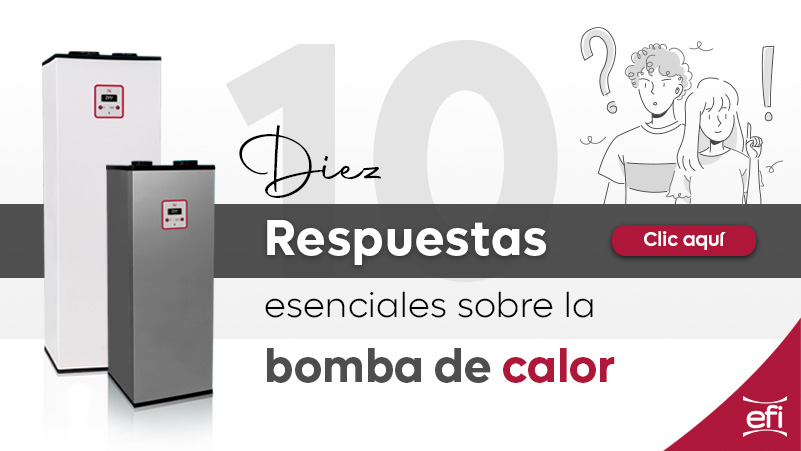Hybrid project: Domestic Hot Water and electricity

Author: Antonio J. Martín
Efitherma R&D Department
Hybrid project: Domestic Hot Water and electricity

Author: Antonio J. Martín
Efitherma R&D Department
Project objectives
Our goal is to give the boost it deserves to a product that takes advantage of the conditions of our environment. Therefore, we contribute with efficiency, energy savings and the use of renewable energies, in this energy transition.
With the support of this call, a commercial action plan would be carried out to obtain more market presence in the province of Córdoba.
The project

DOMESTIC HOT WATER + ELECTRICITY
The project consists of carrying out a sales plan to achieve relevance for our Hybrid System, manufactured in Lucena (Córdoba), but which is currently unknown despite its technical suitability for the area.
This product is a solution for simultaneous hot water and electricity generation. Solar thermal is used as a source of energy for a heat pump that will be responsible for the production of DHW. Likewise, photovoltaic allows different uses: electricity generation for the self-consumption of the home/installation or electricity generation for the self-consumption of the heat pump, making it a “zero consumption” equipment.
Thus, it allows its application in domestic DHW installations where electricity is used for self-consumption and surpluses for thermal generation, or thermal generation is directly prioritized so that everything produced is transformed into thermal energy that accumulates in the form of accumulated water temperature.
In addition, this solution is equally valid for large consumption of electricity and hot water, where we manage to provide large amounts of thermal and photovoltaic energy thanks to the collection of the Hybrid Panel.
Hybrid Panel
It is a solar panel without a glass cover, that is, without a greenhouse effect. In appearance similar to a standard photovoltaic panel, but to which a thermal panel is incorporated inside. Water with glycol circulates through the panel (as in a standard thermal solar panel), but at a very low temperature (even below 0 degrees). This is due to the fact that heat is continuously extracted to contribute it to the water that is being heated. This is thanks to the operation of an intermediate heat pump.

Low-temperature glycol water operation has several advantages. First of all high thermal collection performances without having a glass cover. Also capture energy directly from the air surrounding the panel (even in the absence of solar radiation), as well as improve the performance of the photovoltaic panel. When it cools down, it causes the panel’s temperature coefficient to have a positive effect at times of high radiation.
This operation is ideal for areas where the climate is not cold and solar radiation is high, as is the case in the province of Córdoba (Spain).
Córdoba, an ideal place for the installation of the hybrid system
The hybridization of technologies seeking synergies between them and the use of solar resources in areas where it abounds, becomes an obligation when it comes to achieving a drastic reduction in environmental impact.
Despite the fact that Efitherma is a company from Lucena (Córdoba), our innovations have often had a greater projection in other countries. In other areas of Europe there is greater awareness and promotion of renewable energy. An alternative to traditional systems where heat pumps have a greater implementation outside our territory. In most cases, these regions have lower levels of solar radiation than in Spain, and have much colder climates for capturing thermal energy from the environment.
AVERAGE TEMPERATURE GRAPH IN CÓRDOBA:

As we can see in this graph, the average annual temperature in Córdoba is around 18ºC. With which, it is an ideal place for the installation of this hybrid solar technology.
Our intention is to further promote the market within the province, and in this way, provide benefits to the environment with efficiency, energy savings, and the use of renewable energy.
Graphic information source: © WeatherSpark.com
As a result of the current regulation and the price of electricity, photovoltaic installations are proliferating in the province. Most of them are without energy storage (due to the high price and low durability of the batteries). This means that, in order to take advantage of the energy generated during the hours of sunshine, it must be consumed at the same time it is generated.
However, most installations are “clunky”. This means that there is no synchronization between generation and consumption. There is no intelligent management to turn on the devices in the sunny hours.

The demand for heat for Domestic Hot Water (DHW) or heating is mainly for residential use and hotels. This happens in hours without sun or with little radiation, with the corresponding energy consumption. On the one hand, excess electricity is being generated because it is not consumed, and on the other, it is being consumed from the network for DHW generation. In the best of cases, there will be a solar thermal energy installation that barely covers the needs during the winter season.
With this initiative we want to open the field of action of all professionals in the sector. The implementation of a product that offers energy efficiency installations not addressed until now. A combination of different forms of renewable use.
In this way, our trajectory as manufacturers, together with that of the installers, will expand the capacity to act. Together, with our work, we will provide that much-needed sustainable growth in the fight against climate change. Competitiveness would increase: We as manufacturers, and that of the rest of the professionals as installers and maintainers.
STRENGTHS OF THE HYBRID SYSTEM:
Any heat pump with a seasonal performance above 2.5 is considered equipment that uses renewable energy as a source for thermal generation, as well as installations with solar thermal energy or biomass. That is why, that impulse and implementation, is increasingly evident thanks to its well-known advantages. Some of these advantages are the ability to operate during the coldest times of the year. By combining this technology with solar in a region like Córdoba, we enjoy enviable radiation rates.
The improvement of photovoltaic efficiency by cooling the panel is more effective in the south than in the north of Spain or Europe.
The hybrid panel optimizes the available cover, taking advantage of the same space for thermal and photovoltaic collection at the same time. Another strength is it’s ease of installation. From the hydraulic point of view it resembles a solar thermal energy installation. Therefore, from the electrical point of view, it is identical to a photovoltaic installation.

Touch FV
Through our Touch PV technology we improve photovoltaic production by up to 20% more. A long-lasting hybrid panel, since it does not have any glass that causes the "greenhouse effect".

Nature Cool
The Nature Cool hydraulic circuit produces DHW and in turn prevents overheating of the photovoltaic base. It is made up of water, an element that makes this technology efficient and respectful of the environment.

ECO 360º
At Efitherma we offer a 100% renewable system in a closed circuit. This unites the production of electricity through photovoltaics, heat thanks to the thermohydric circuit of the panel and DHW with the heat pump.
Arguments in favor
- Direct benefit from the use of renewable energy and energy efficiency.
- The price of electricity, the photovoltaic impulse and the optimization of self-consumption.
- Make other sustainable technologies available to professionals in our province.
- All in one: use of space and multiple use of renewable energy.
Application Examples
Below is a case study of one of our hybrid installations for DHW for domestic use.

This table shows, hour by hour, how much electrical energy in Wh would be produced on one day of each month of the year. (Hybrid panels inclined 37º with losses of 20%):
*Radiation data from the PVGIS tool.
The row in yellow shows how much total electrical energy in Wh would be generated per day, which is likely to be self-consumed. A solution with a heat pump like the one proposed would consume all of this energy.

In the worst case where the heat pump is not activated and the water is heated by electrical resistance, we would be saving money (taking into account the average price of electricity in the last year). In addition to this, we avoid a total of 1.35 tons of CO2 (considering 0.2 tep/MWh of final energy and 4.05 tCO2/tep of CO2 emissions).
These data reveal that a small installation of only 2 panels of 500Wp, for the thermal generation of DHW with combined equipment of hybrid panel and heat pump that takes advantage of 100% of the electrical energy generated, at least, represents 315€ of savings per year, with final thermal energy production being between 2.5 and 3 times higher, and electricity production up to 10% higher due to panel cooling.
Share
More articles
Do you know Efitherma?
Do you know Efitherma?
14900, Lucena
Córdoba (España)
957 591 684
Newsletter
Suscríbase a nuestro boletín de correo electrónico para obtener consejos útiles y todas las novedades
Enlaces útiles
Descubre Efitherma
Contacto
Redes sociales
Suscríbase a nuestro boletín de correo electrónico para obtener consejos útiles y todas las novedades







